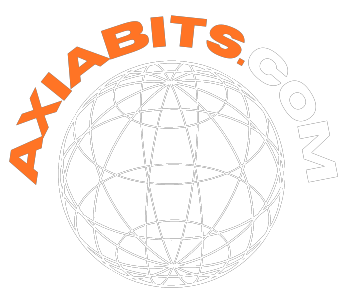The real challenge begins when it’s time to optimize for conversions, engagement, and business outcomes. Marketing teams invest enormous effort and resources to attract visitors, but what happens once those visitors land on your page? How do you make every click count?

At Webflow, we set out to answer that question with Webflow Optimize—an AI-powered solution that helps marketers test, analyze, and iterate on their websites. The goal? To empower users with intelligent tools that make optimization faster, easier, and smarter.
In this post, we’ll explain the engineering decisions, AI techniques, and performance considerations that made Webflow Optimize possible. Try Webflow for Free and start optimizing your site with AI-powered tools today. Discover how Webflow built its AI-powered optimization solution to boost conversions, streamline testing, and deliver actionable insights for marketers.
Table of Contents
The Optimization Loop: From Idea to Insight
The foundation of Webflow Optimize is a structured cycle that mirrors how modern teams iterate:
Idea generation → Testing → Actionable insights → Iteration.
This loop drives continuous improvement and helps teams make evidence-backed decisions. Webflow Optimize streamlines each stage with purpose-built AI features, allowing marketers to focus on strategy instead of logistics.
Let’s dive into how we built each part of this loop. Get started with Webflow and unlock access to Webflow Optimize.
AI-Powered Suggestions: Accelerating Creative Ideation
Generating high-performing ideas—like new headlines, CTAs, or layouts—is often where teams hit a wall. Creative blocks and time constraints make it difficult to produce high-quality alternatives quickly.
To solve this, we introduced two core generative AI tools:
- Suggest Copy – Generates new headlines, body text, and CTAs.
- AI Landing Page Generator – Proposes layout and content changes for entire pages.
These tools are powered by large language models (LLMs), tailored to create contextually relevant content for Webflow sites.
Context is Everything
One of our biggest challenges was ensuring AI outputs were highly relevant to each page’s context. We built a custom webpage crawler to extract metadata, content structure, and test-specific details from each site. This context is passed into the LLM prompt to help it generate precise, targeted suggestions.
We also built interactive playgrounds so users could test and rate suggestions. This feedback loop continuously improves prompt design and AI outputs.
“Last-Mile” Validation
To ensure quality, we implemented placement validators and code checkers that fix common formatting issues in AI-generated content. These final validation steps are crucial for maintaining quality and accuracy, especially when AI is tasked with editing live web content.
Example: Student-Targeted Optimization
We prompted the AI to update a landing page to appeal to college students. It returned five copy suggestions:
Original text:
“Students, boost your Webflow knowledge with a free annual CMS site plan.”
AI-suggested update:
“University students, level up your project work with a free annual CMS site plan.”
The update retained the message but added contextual specificity, making it more relevant to the target audience.
Explore Webflow now – the platform where design meets conversion intelligence.
Smarter Testing with Bayesian Neural Networks
Traditional A/B testing splits traffic evenly and waits for statistical significance. This method, while simple, has major drawbacks:
- Wasted traffic on poor-performing variations.
- Static insights that don’t adapt to real-time trends.
With Webflow Optimize, we wanted something better.
Dynamic Traffic Allocation
Our solution uses Bayesian neural networks to dynamically reallocate traffic based on performance. Here’s how it works:
- Initially, traffic is split evenly across all variations.
- As performance data accumulates, the model updates its belief about which variant is best.
- More traffic is routed to better-performing options, while still reserving some for exploration.
This dynamic approach reduces wasted traffic and adapts to real-world conditions, such as changing campaign goals or audience behavior.
Why It Matters
Web traffic is never static. Pages change. Promotions come and go. Ad campaigns evolve. Even weekday vs. weekend traffic can behave differently.
To reflect this complexity, our models include contextual features like traffic sources, devices, and time-of-day. We also use weighted sampling to ensure long-term balance and account for shifting user behavior.
Why Bayesian Neural Networks?
Bayesian models offer two key advantages:
- Uncertainty estimation: Balances exploration vs. exploitation.
- Overfitting prevention: Useful in low-data environments or when data is sparse across dimensions.
Together, these strengths make Bayesian networks ideal for web optimization, where outcomes depend on many interacting variables and continuous change.
New to Webflow? Learn how to build your first website without coding using Webflow’s intuitive visual editor. This beginner-friendly guide walks you through every step – from designing your layout to launching your site – without writing a single line of code.
Training at Scale: Tools and Techniques
Building a responsive, high-performing model requires robust infrastructure. Here’s how we scaled our training pipeline.
Infrastructure Stack
- Apache Spark on AWS EMR – For fast, parallel feature engineering.
- AWS Batch with TensorFlow – For scalable training (up to 10,000 jobs in parallel).
The Flipout Trick
Bayesian networks require sampling weights, which is computationally expensive. We used the Flipout trick, an efficient technique for variance reduction during training. This allowed us to scale training without exploding costs or memory usage.
Debugging Efficiency
During training, we discovered a memory leak in tf.py_function. Switching to tf.numpy_function resolved the issue—an example of how even small bugs can become bottlenecks at scale.
Try Webflow here and experience a smarter approach to optimization.
AI Insights: Making Results Actionable
Running tests is only half the battle. Teams also need to understand the results and decide what to do next.
Enter AI Insights—our LLM-powered assistant that analyzes test outcomes and provides clear summaries, explanations, and recommendations.
Built for Marketers
AI Insights translates data-heavy test results into marketer-friendly language. It answers questions like:
- “Which variation performed best for mobile users?”
- “Was this uplift significant, or just noise?”
- “What should I test next?”
Engineering Considerations
Building AI Insights required solving multiple challenges:
- Context awareness: Structured test data had to be passed into the LLM interpretably.
- Performance: Summarizing large datasets without excessive token usage.
- Domain language: Generating copy that sounds natural to marketers, not engineers.
We solved these by:
- Using chat threads with context memory.
- Preloading common stats for fast access.
- Creating a simplified API surface for stats queries.
- Embedding product manuals into the assistant’s system context.
This layered design ensures insights are grounded, accurate, and easy to act on.
Continuous Evaluation: Measuring LLM Quality
To ensure quality, we built a multi-tiered evaluation framework:
- Tool-level validation – Did the assistant call the right function?
- Automated “LLM judge” – Simulates a savvy marketer to rate responses.
- Human review – Internal teams review outputs for clarity, accuracy, and helpfulness.
- Live feedback – We incorporate customer feedback into tuning and retraining.
Over time, this system helps us refine not just the LLM responses, but the judgment and evaluation criteria themselves.
The Road Ahead: Empowering Marketers with AI
Webflow Optimize represents a fundamental shift in how teams approach web optimization. By integrating AI at every stage—idea generation, testing, insights—we’re turning once-complex tasks into intuitive workflows that marketers can own.
Here’s what we’re most proud of:
- Intelligent automation: Marketers spend less time managing tests and more time strategizing.
- Adaptable algorithms: Our models evolve with changing behavior and content.
- Scalable infrastructure: Designed to support thousands of simultaneous tests.
- Actionable insights: AI generates ideas and helps interpret and improve them.
But we’re just getting started.
Need reliable hosting for your Webflow project? Check out Hostinger – trusted for speed and affordability. With 24/7 support, free domain, and lightning-fast performance, it’s a solid choice for beginners and pros alike.
Final Thoughts
Optimizing every pixel of your website matters in a digital world where attention spans are short and competition is fierce. Webflow Optimize brings the power of AI to your fingertips, helping you test smarter, iterate faster, and deliver better outcomes.
We believe that data-backed creativity should be accessible to every team, not just those with a Ph.D. in statistics. And that’s the future we’re building.
Curious to see it in action? Explore Webflow Optimize and start your AI-powered testing journey today.
Disclaimer
This article features affiliate links, which indicates that if you click on any of the links and make a purchase, we may receive a small commission There’s no extra cost to you and it aids in supporting our blog, enabling us to keep delivering valuable content. We solely endorse products or services that we think will benefit our audience.
Frequently Asked Questions
What is Webflow’s AI-Powered Website Optimization Solution?
Webflow’s AI-powered optimization solution is a system we developed to automatically analyze and improve key performance areas of Webflow websites, such as loading speed, SEO, accessibility, and UI/UX—using machine learning and smart automation.
Why did you build this AI optimization tool for Webflow?
We wanted to help Webflow users improve site performance without needing deep technical knowledge. The goal was to simplify complex audits and give actionable, automated fixes based on AI analysis.
How is this different from other optimization tools?
Unlike general-purpose performance checkers, our solution is Webflow-specific. It directly integrates with Webflow’s CMS, Designer, and API to suggest or apply fixes natively, streamlining the workflow for Webflow users.
Is this solution available for all Webflow users?
Currently, it’s being rolled out in phases and tested with select users and agency partners. We aim to expand access shortly through beta invites or Webflow-integrated plugins.
Can users manually override AI suggestions?
Absolutely. The tool is designed to assist, not replace, creative control. Users receive suggestions with clear explanations and can choose whether to apply them.







